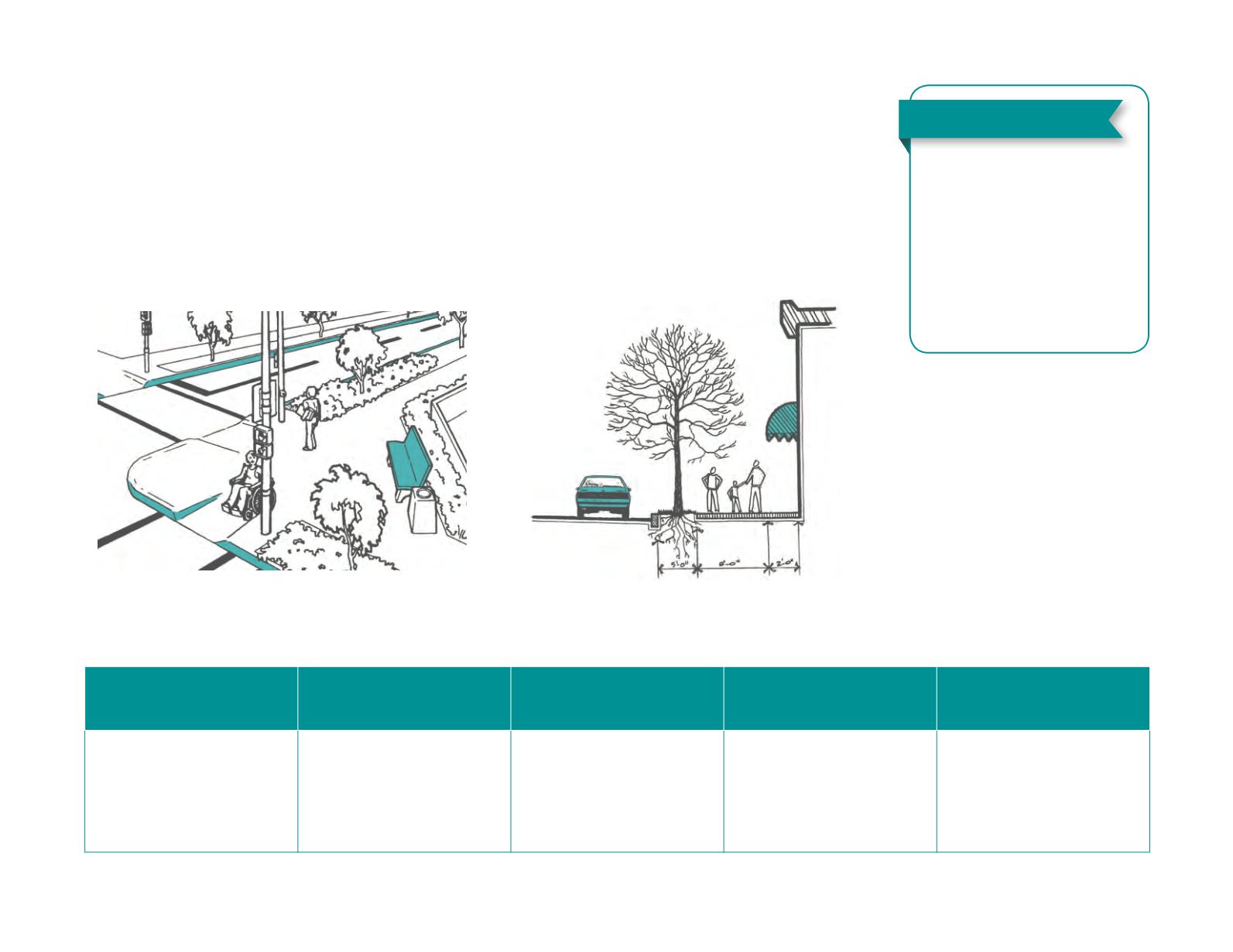
CONNECTED COMMUNITIES
18
■■ Increase in sidewalks on
existing roads
■■ More municipal codes
requiring sidewalks
■■ Percent of people
commuting by walking
■■ Reduction in pedestrian/
vehicle accidents
Measuring success
Central Business District
Sidewalks
Commercial, Office, and
Industrial Sidewalks Outside
of Central Business District
Residential Sidewalks along
Major Streets
Residential Sidewalks on
Local Streets with more
than 4 homes per acre
Residential Sidewalks on
Local Streets with 4 homes
per acre or less
• Minimum width of 8 feet
• 5 foot verge or setback
from curb
• 8 foot width should be free of
street furniture or
opening doors
• Minimum width of 5 feet
• 5 to 8 foot landscaped verge
from curb
• Minimum width of 5 feet
• 5 to 8 foot landscaped verge
from curb
• Minimum width of 5 feet
• 2 foot landscaped verge
from curb
• Minimum width of 4 feet
• 2 foot landscaped verge
from curb
For ease of passing and handicapped accessibility, sidewalks
should be at least five feet wide in more active areas, with a
five foot setback from streets. Utility lines, walls, slopes, and
other features may require adjustments to this standard.
In downtown areas, sidewalks should be 8 feet wide
in addition to any area needed for opening doors,
landscaping, or street furnishings.
…advocate for more sidewalks and pedestrian-oriented design of developments
Sidewalks and crosswalks should be provided in all growth areas, including commercial areas and residential areas with more
than one home per acre. On the Future Land Use Map, this includes areas identified as Regional Mixed Use Center, Business
Area, Community Mixed Use, Town Center, Village Center, Town Residential, and Suburban Residential.
Developments, streets, and buildings should be designed to encourage walking with buildings close to the street, front doors in
buildings, direct and separated pedestrian connections to streets, short blocks, streetscaping, traffic calming, and interconnected
streets. Local municipalities should consider installing sidewalks in existing walkable areas with important destination, such
as schools, shopping centers, and parks.
The county will advocate for better walkability, will install sidewalks on county roads in appropriate locations when the roads
are rebuilt, will conduct walkability audits with local communities, and will prepare a walkability plan.


